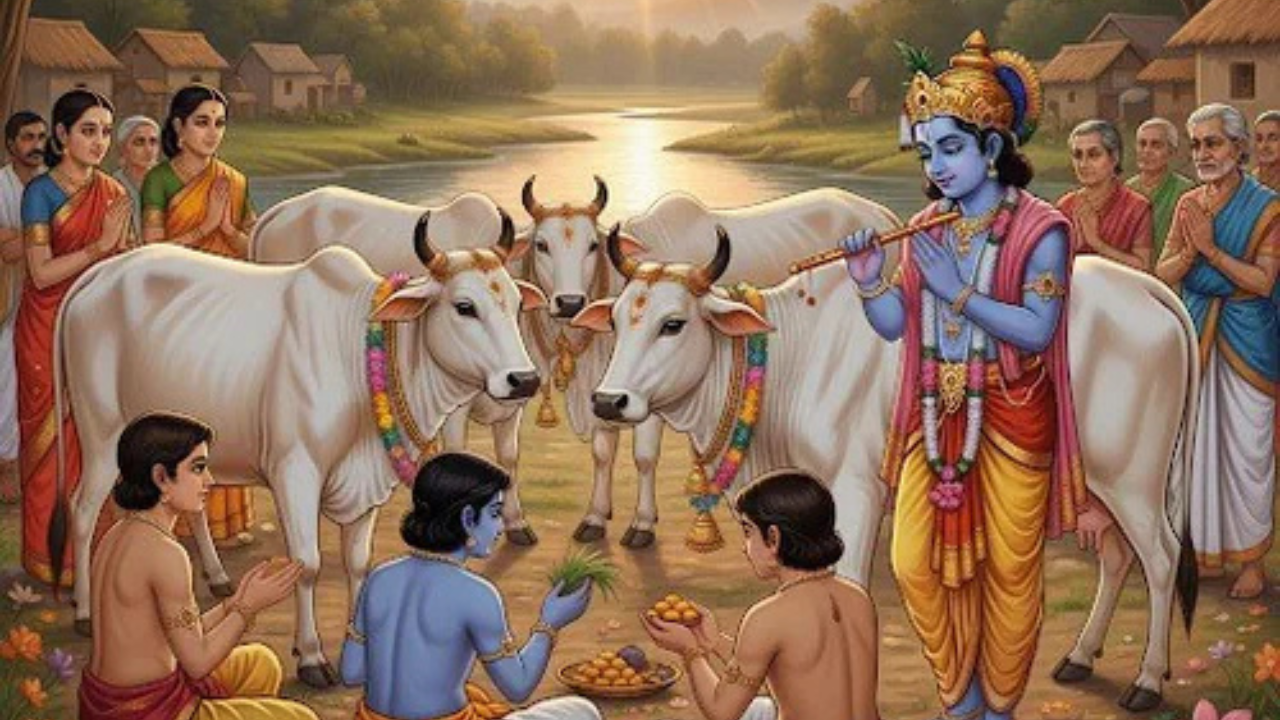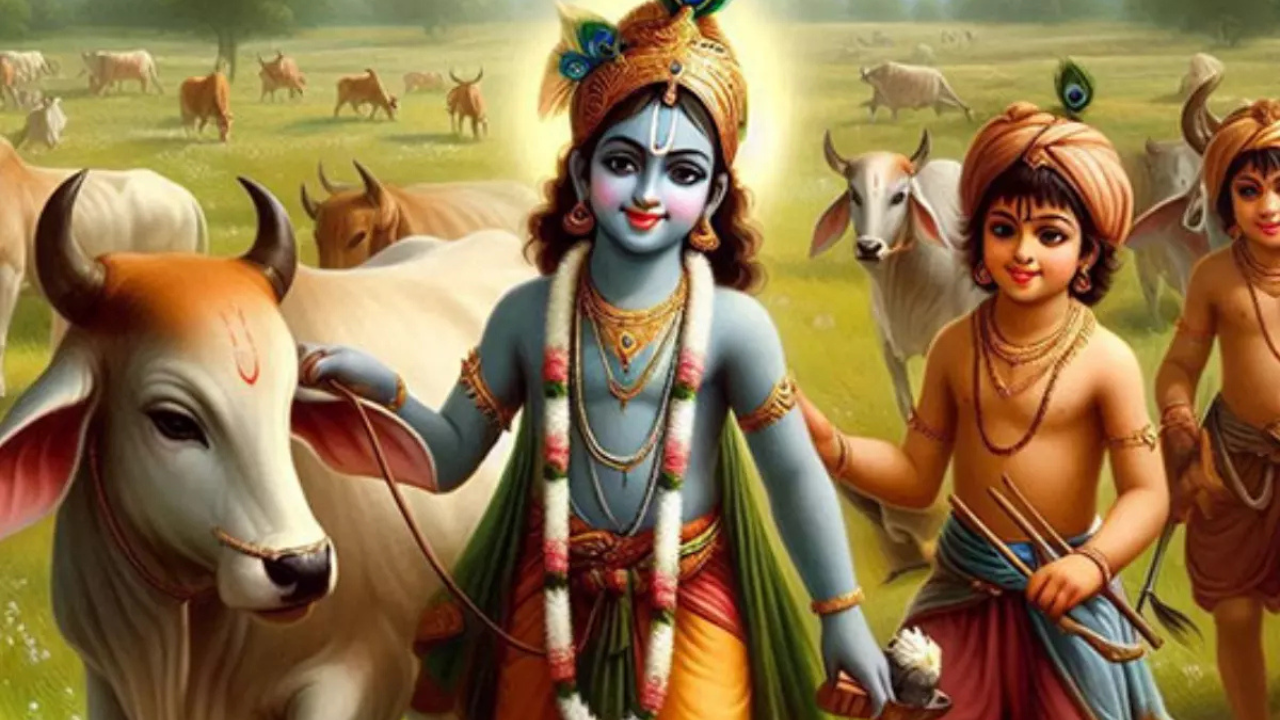 English
English

As Krishna steps into his divine duty as protector of cows on Gopashtami, the story takes a surprising twist, Radha, barred from joining him, dons a boy’s disguise. Was it rebellion, love, or a timeless lesson on devotion beyond identity?

Radha disguised herself as the cowherd Subal to be near Krishna.
Vrindavan: In Hindu tradition, Gopashtami, observed on the eighth day (Ashtami) of the bright half of the month of Kartik, celebrates Lord Krishna’s first day as a cowherd. His father, Nanda Maharaj, deemed him old enough to take the family’s cows to graze, a moment that marked the young deity’s transition from childlike play to purposeful service.
As the sun rose over the fields of Vrindavan, Krishna and his friends prepared to lead the cows out. The village rejoiced except for one person who wasn’t allowed to go: Radha. In a time when village customs kept girls from joining the boys in herding, her yearning to be with Krishna sparked a story that continues to enchant devotees today.
According to the Padma Purana and several Vaishnava traditions, Radha’s friend Subal helped her disguise herself as a cowherd boy. Wearing his clothes and carrying a stick, she joined Krishna among the grazing fields.
Krishna, knowing her secret, smiled, their divine love had once again transcended worldly boundaries.
This act wasn’t simply mischief; it was bhakti, pure devotion. Radha’s willingness to shed her identity symbolizes the soul’s readiness to dissolve ego and merge in divine love. Her disguise became an expression of unity rather than deception.
Gopashtami 2025 Date: 29 or 30 October? Know Why Cows Are Worshipped on This Divine Day
Radha’s disguise offers a radical spiritual message: that love for the Divine cannot be confined by gender, role, or appearance.
In a society structured by social norms, her act becomes an early metaphor for spiritual equality.
Vaishnava saints like Chaitanya Mahaprabhu and Rupa Goswami interpreted the story as a symbol of complete surrender, where the devotee loses all worldly identity to be near God.
In modern interpretations, scholars see Radha’s story as feminist devotion, asserting the feminine voice not through defiance, but through devotion that refuses exclusion. It’s devotion that says, “If love is divine, no rule can separate us.”

Gopashtami marks the day Krishna was given charge of the cows.
In today’s world, marked by identity debates, gender discussions, and calls for equality, the story of Radha’s disguise feels strikingly relevant.
It speaks of love beyond labels, of authenticity that transcends form. Temples in Barsana and Vrindavan still celebrate this episode during Gopashtami with plays and songs, portraying Radha as Subal-sakhi, the friend who teaches that real love dissolves all boundaries.
This year’s occasion holds some additional interest. The Ashtami tithi spans two calendar days, starting 9:23 AM on 29 October and ending 10:06 AM on 30 October, which means regional calculations differ over whether the observance falls on 29 or 30.
Also, particular yogas (auspicious astrological combinations) such as Ravi Yoga and Shivvas Yoga are said to coincide with the tithi this year, adding to its spiritual weight.
Gopashtami isn’t just about cows or Krishna’s duty, it’s about Radha’s devotion, courage, and the unspoken truth that divine love knows no disguise.
As Radha walks beside Krishna, dressed as a boy, the festival whispers a question to every soul: How far are we willing to go to be one with the Divine?